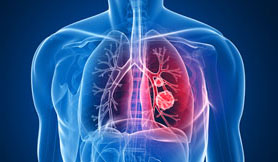Study: COPD-related Anxiety is Misunderstood and Under-Addressed
Anxiety related to chronic obstructive pulmonary diseases (COPD) is triggered initially by specific events in the illness trajectory and thereafter maintained by COPD-related internal, external, and behavioral factors. That is according to new research designed to improve identification and management of COPD-related anxiety, a prevalent but often unidentified issue that is not typically managed adequately.
Researchers in Denmark synthesized the findings of 41 qualitative studies of patients’ experiences of COPD-related anxiety. They identified four themes related to the disorder – initial events, internal maintaining factors, external maintaining factors, and behavioral maintaining factors – and used them to create a conceptual model of COPD-related anxiety from the patient perspective.
“According to the model, specific initial events can trigger COPD-related anxiety, i.e., realizing the diagnosis and/or prognosis, experiencing exacerbation/symptom progression for the first time, and loss of function and/or abilities due to COPD,” they wrote, noting that despite multiple studies exploring the psychological effect of other illnesses including cancer, the same cannot be said for COPD. “One possible explanation for this lack of focus might be related to the consideration that smokers should expect to be ill from smoking, which is a widespread understanding of COPD, despite also being the case for certain cancers and cardiovascular disease. Another explanation may be the relatively slow progression of the disease, often resulting in several visits to the doctor with symptoms and declining lung function before the diagnosis is confirmed by the physician and disclosed to the patient.”
Results of the study, published in the June 2023 issue of International Journal of Chronic Obstructive Pulmonary Disease, suggest that, once triggered, COPD-related anxiety was maintained and potentially worsened over time by internal, external, and behavioral maintaining factors. For example, the review showed that patients were troubled by thoughts of death and the process of dying. They further expressed that, even shortly after being diagnosed with COPD and understanding the prognosis, death became a near reality, which affected their internal processes.
“In spite of being aware of patient needs, many health-care providers feel inadequately prepared for discussing end-of-life issues and might therefore tend to avoid bringing up the subject. Moreover, appropriate timing of these conversations can be challenging, due to the unpredictability of the general illness trajectory in COPD compared to cancer.”
The study also suggests that patients suppress information about mental health, believing that their healthcare providers and caregivers could not understand or comprehend their situation. As such, they refrained from requesting help with their anxiety and initiated avoidance and social distancing which worsened symptoms.
“With the purpose of strengthening the identification of COPD-related anxiety in the future, there are a number of potential barriers among health-care providers that need to be overcome, such as not recognizing the scale of the problem, not considering anxiety as part of the remit, and lack of knowledge about or access to appropriate interventions. Both health-care providers and patients can benefit from implementing systematic, psychological screening processes, because it can potentially increase confidence in assessing and managing psychological symptoms,” the researchers wrote.
Additional insights from Dr. Nair: The need to breathe is so fundamental that if one chronically has trouble doing it, it will predispose them to anxiety. Anxiety also causes one to hyperventilate, which actually leads the body to emphasize the main defect in COPD – impairment to getting the breath out of your lungs. The “obstruction” in COPD is getting air out (exhalation) rather than in (inhalation). It takes longer to empty your lungs than it does to fill them, so the more times you breathe in the less time you have to breathe out. Thus, anxiety is an important symptom for a doctor to address when treating a person with COPD in a comprehensive manner.
Read the full study in International Journal of Chronic Obstructive Pulmonary Disease
 An improved quality of life is the NEF mission.
An improved quality of life is the NEF mission.The NEF’s mission is to improve the quality of life of patients with emphysema and their caregivers by providing and supporting educational, advocacy and research... ARTICLE >
 Everything We Know About COVID-19, Precautions and Vaccines
Everything We Know About COVID-19, Precautions and VaccinesIt’s been more than a year since the World Health Organization (WHO) declared COVID-19 a global pandemic. Though the emergence of several vaccines hold promise for... ARTICLE >
 COPD and Emphysema afflict millions of adults and children today.
COPD and Emphysema afflict millions of adults and children today.An estimated 3.1 million Americans have been diagnosed with emphysema and 11.2 million U.S. adults have been estimated to have COPD. Emphysema and Chronic... ARTICLE >

